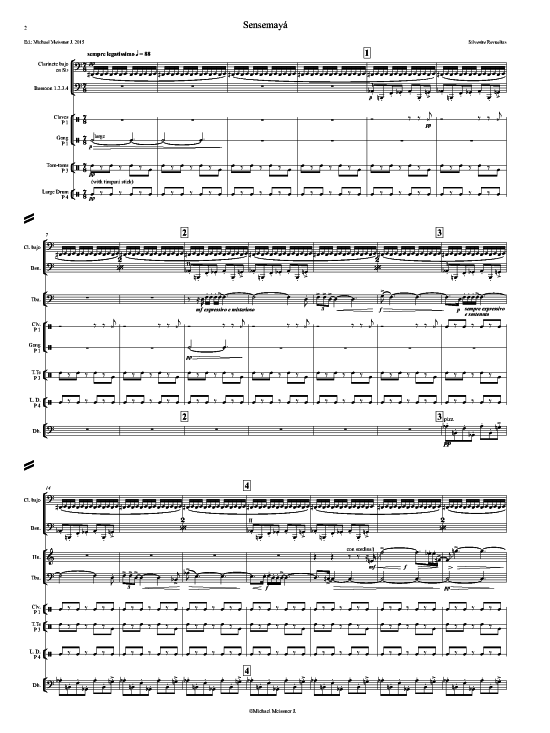Sensemaya (Orchester, nur Partitur) - Sheet Music Download PDF
Silvestre Revueltas

Sensemaya (Orchester, nur Partitur) - Sheet Music Download PDF
Silvestre Revueltas
Test Print Sheet Music
Details
| Product number: | 9783737806053 pdf |
|---|---|
| Arrangement: | Orchestra |
| Genre: | Klassik |
| Era: | from 20th Century |
| Authors: | Revueltas, Silvestre/ Meissner J., Michael |
| Pages: | 33 |
| duration: | : |
| Publisher: | Edition Mexican Concert |
Description "Sensemaya "
Nowadays Revueltas is considered not only the most important XX. Centurie’s Mexican composer, but one of the main composers worlwide, and Sensemaya (1938) his masterpiece. The work is inspired by the poem “Sensemayá: canto para matar una culebra” (“Sensemaya: song to kill a snake”) of the Cuban poet Nicolás Guillén (1902-1989), Revueltas’ friend. The relationship between text and music is very close throughout the whole piece, as shown already at the beginning: ¡Mayombe-bombe-mayombé - corresponds to the rhythm of the strings at number 11, meanwhile the word “sensemayá” determinates as well the rhythm of the whole piece from the very beginning as the predominant 7/8 time in general. Generally, the lower instruments (tuba, bass clarinet etc.) represent the world of the snake, meanwhile the brass, mainly the trombones, ”tell” almost literally the story of the poem, and the song of the woodwinds stay for the hunters or the human part of the whole. After the killing, when all musical elements are closely combined and confronted, the work ends with a sort of triumphal procession, superposing all themes in a huge collage of extraordinay sound ecstasy. Apart from the very clearly handwritten score, dated on March 6, 1938, exists a shorter earlier versión from 1937 for chamber ensemble, not published by the author. Although this versión contains all musical elements of the later score, it misses the fascinating, virtuous instrumentation of the brilliant final version. Only few details of the score have to be mentioned: the bass clarinet is written transposed but in the sounding octave, so the first note to be heared is c#. At the trombones should be indicated senza sordina in bar 50, and at the bass trombone the second voice is left over in bar 97/98. The list of percussions previous to the score contains Maracas and Snare Drum, but they don’t appear in the score
Login

 Payment methods
Payment methods

























